#ortona welcome
Explore tagged Tumblr posts
Text
Ortona
Una città “dalle sere dolci e profumate come quelle d’Oriente”
(Gabriele D’Annunzio)
Questa città ha una storia tutta da scoprire, dove leggende tramandate nel tempo si mescolano alla vita di tutti i giorni e sanguinose battaglie e saccheggi distrussero tanto davvero troppo tra le vie di questa cittadina.
In passato la città era completamente circondata da una cinta muraria trecentesca e al suo interno era suddivisa tra Terra Vecchia, ovvero la zona dove abitavano i pescatori e i marinai e dove si svolse la terribile Battaglia del dicembre 1943, e Terra Nuova, una zona costituita per lo più da orti e campi. Parlando di Terra Vecchia bisogna considerare un aspetto molto singolare che i pescatori avessero lì le loro casette colorate tra quelle viuzze strette nella parte alta della città e non sulla costa vicino al porto e che per raggiungere le loro imbarcazioni percorressero degli scalini che collegano ancora oggi queste due zone; inoltre bisogna dire che il porto un tempo non era situato dove lo troviamo oggi ma si trovava più vicino al Castello Aragonese quindi sotto la cosiddetta Pizzuta.
Proprio dietro al faro dell'attuale porto, dove si trova anche una statua di San Tommaso che accoglie i marinai, c'è una piccola spiaggetta di pietre nominata la spiaggetta della Ritorna perché con l'avvicinarsi del maltempo le mogli dei pescatori (ed anche secondo un'altra leggenda una principessa) urlavano e pregavano «ritorna» ai loro amati.
Percorrendo le viuzze di Terra Vecchia possiamo notare un arco in pietra tufacea, il materiale di cui sono costutuite le scogliere, una casa lasciata così com'era di cui si può scorgere il colore originale attorno alla finestra e una casa che venne distrutta dalle bombe che si trova (ironia della sorte) nella piazzetta dedicata alla convivialità nominata dell'Allegria.
Per quanto riguarda il commercio bisogna dire che Ortona aveva un commercio comune con Venezia di stoccafisso e baccalà, che un tempo era il pesce dei poveri e dei contadini.
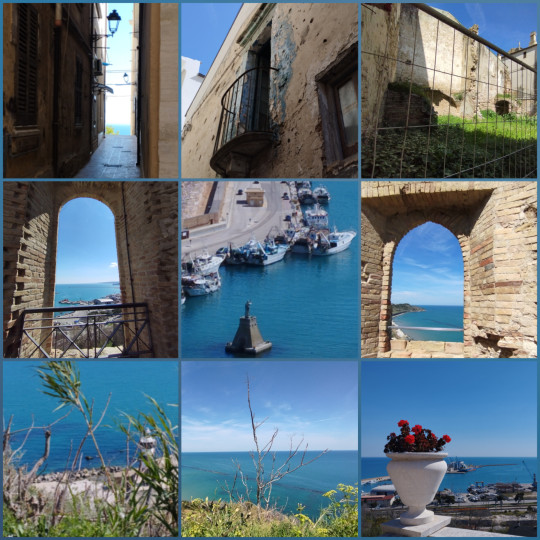

Terra Vecchia ha termine dove è situato Palazzo Farnese, costruito nel 1584 venne comprato dalla Madama (Margherita d'Austria) insieme a tutto il feudo di Ortona e le vennero affidati anche i restanti feudi abruzzesi che amministrò con grande maestria.
Tra i personaggi illustri di Ortona che possiamo nominare ci sono due membri del Cenacolo Michettiano: Basilio Cascella (seppur nato a Pescara) e il compositore Francesco Paolo Tosti.
Pertanto a fine 800 Ortona vive di riflesso del Cenacolo Michettiano e vengono costruite case in stile liberty.
Proprio a Ortona è stato composto il nostro "inno" abruzzese per la gioventù "Vola Vola Vola " a cui a Porta Caldari è dedicata una fontana.
Vulesse fa' r'venì pe' n'ora sole
Lu tempe belle de la cuntentezze
Quande pazzijavame a vola vola
E te cupria de vasce e di carezze
E, e vola, vola, vola, vola, vola E vola lu pavone Si tiè lu core bbone Mo' fammece arrepruvà
...

Percorrendo la passeggiata orientale che costeggia la costa e qualche viuzza raggiungiamo affacciato sul mare il Castello Aragonese che esternamente si presenta intatto ma all'interno possiamo notare essere rimaste in piedi solo alcune mura e torrette. La sua storia è un continuo trasformarsi: da alcuni resti romani venne costruita poi una fortezza che in seguito venne utilizzata per scopi militari, per poi venire acquistata facendola diventare un palazzo signorile con all'interno un meraviglioso giardino all'inglese.

È arrivato il momento di fare una visita al museo dedicato alla Battaglia di Ortona tra civili e soldati canadesi contro le truppe tedesche, ma intanto possiamo già rinvenire delle tracce di questo sanguinoso scontro in un vicolo della città dove possiamo ancora leggere una scritta che indicava il coprifuoco: "il coprifuoco per tutte le truppe alleate è alle 21:00" e affianco possiamo notare dei fori nel muro causati dalle schegge delle granate esplose e dai proiettili.
Il Museo della Battaglia conserva oggetti e foto che testimoniano i giorni del violento scontro urbano del dicembre 1943, ciò che caratterizza questa guerra è essere stata principalmente una guerra di "propaganda" e poco utile invece a fini strategici, anche se comunque molto sanguinosa essendosi svolta casa per casa.
I civili vennero fatti sfollare dalle truppe tedesche ma non tutti fuggirono decidendo di nascondersi nelle cantine delle loro case ma perdendo così la vita.
Ortona ha ottenuto la medaglia d'oro al valore civile perché durante il conflitto ci si è aiutati l'un l'altro civili e soldati canadesi.
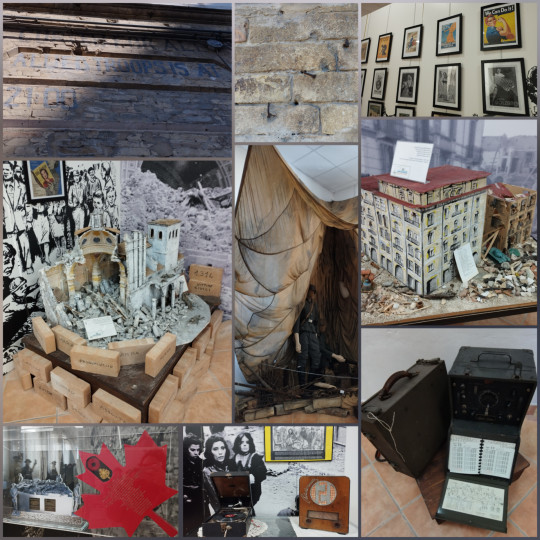
I tedeschi tra le altre cose distrussero anche la torre dell'orologio, una delle due torri della Cattedrale di San Tommaso, per evitare fosse un punto di avvistamento.
Ma perché proprio a Ortona?! Semplice, perché è qui che il Re Vittorio Emanuele III di Savoia fuggì durante la seconda guerra mondiale imbarcandosi appunto al porto di Ortona verso Brindisi; ed è qui che si trovava la Linea Gustav.
Tra gli oggetti presenti nel museo possiamo soffermarci su tre in particolare:
I papaveri ricamati sulle vesti dei soldati canadesi e delle crocerossine, che indicavano la loro morte in battaglia essendo i papaveri rossi come il sangue;
Varie radioline e giradischi militari con cassa perché anche i soldati avevano bisogno di qualche momento di svago;
Una foto particolarissima, una foto di un banchetto di natale realizzato durante la guerra per i soldati circondato da firme, firme dei soldati sopravvissuti sia canadesi che tedeschi come inno alla pace, a testimoniare che fare la guerra non conviene.

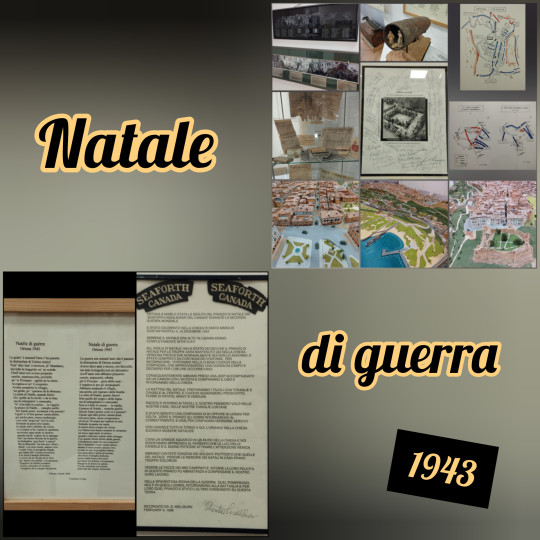
Ora è sufficiente uscire dal museo e svoltare verso la costa per raggiungere la Cappella del Crocifisso Miracoloso. Un tempo chiamato monastero di Sant'Anna questo luogo è testimone di antiche storie di fede, mare, corsari saraceni e leggende anche culinarie.
Era il luogo di fede in cui vivevano e pregavano del monache di clausura. Si narra che un giorno mentre pregavano l'affresco del crocifisso iniziò a gettare sangue dal costato, questo venne considerato un miracolo ma anche simbolo di presagio di un'imminente tragedia. Il sangue miracoloso venne raccolto in due ampolline, di cui una si trova a Venezia e l'altra è rimasta in questa Cappella ad Ortona rinchiusa in una teca (che viene messa in mostra il secondo venerdì del mese).
Il presagio era reale infatti dalla costa arrivarono le vele dell'ammiraglio della flotta ottomanna Piyale Paşa che iniziarono a distruggere tutto. Gli abitanti di Ortona fuggirono nelle campagne ma le monache di clausura non poterono abbandonare il monastero e restarono a pregare, le loro preghiere forse le salvarono perché Ortona viene nuovamente distrutta ma i nemici non riuscirono nemmeno ad avvicinarsi al monastero e alle suore di clausura perché una fitta nebbia ricoprì questo luogo come a renderlo invisibile e inesistente.
A questo luogo e alle monache di clausura sono legate anche altre due leggende di cui una è solamente la visione della realtà in chiave magica e fantasy poiché le monache di notte per lavare i panni si recavano alla fonte vicina facendosi luce nel buio e da allora quella fonte venne chiamata la fonte delle fate. Mentre l'altra è legata alla nascita del dolce tipico di Ortona: le nevole (da non confondere con le neole o ferratelle abruzzesi), dolce che appunto secondo questa leggenda è stato creato dalle monache di clausura che un giorno avendo finito le ostie presero gli ingredienti che avevano e unendoli e cuocendoli con il ferro per le ostie diedero vita alle nevole, la cui ricetta prevede solamente mosto cotto, arancio autoctono dal sapore dolceamaro e olio d'oliva (alcuni pasticceri del posto aggiungono anche della cannella).

La Cattedrale di San Tommaso, un tempo Cattedrale di Santa Maria Vergine, custodisce le reliquie dell’apostolo San Tommaso e la sua pietra tombale dove viene ritratto l'apostolo e che presenta due fori uno per inserirvi un bastoncino di incenso e l'altro per inserirci degli oggetti che successivamente venivano recuperati intrisi dell'energia sacra per poter ottenere cure miracolose, infatti sia la pietra tombale che le reliquie stesse dell'apostolo sono importanti non per il loro aspetto fisico materiale ma per l'energia fortissima dell'anima che emana il corpo del santo apostolo, un'anima che è stata così vicina a Cristo nei suoi giorni in Palestina.
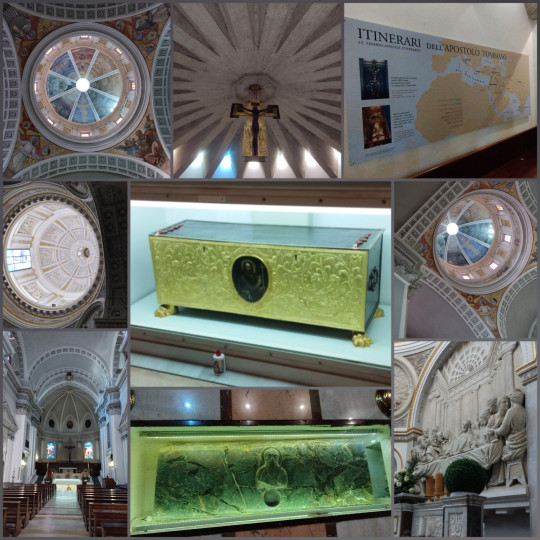
Spero questo riassunto vi abbia fatti viaggiare insieme a me alla scoperta di questa città abruzzese e ringrazio per la visita guidata i Compagni d'Avventura e Ortona Welcome
#pensieri per la testa#persa tra i miei pensieri#Ortona#Abruzzo#storia#cultura#visita guidata#alla scoperta del territorio#compagni d'avventura#abruzzese#battaglia#guerra#castello aragonese#cattedrale#crocifisso#miracolo#legenda#leggenda#ortona welcome#nevole#costa#mare#foto#fotografia#scatto fotografico#sintesi#riassunto#reportage#reporter#reportage fotografico
7 notes
·
View notes
Text
Useless Italian facts (mostly about food, because, Italia...🇮🇹 )
Italian is the language that has more words concerning food that any other language in the world.
In Caldaro di Ortona, Central Italy, there is a fountain that gives wine 24/7.
Italy has the highest number of UNESCO World Heritage. We are know as 'Il bel paese', 'THE beautiful country'.
Ferrari, Barilla, Gucci, Prada, Versace, Armani, Lamborghini, Fiat and Nutella, among many more, are all italiana brands, and chances are that you've mispronounced the whole lot of them. Also, you're welcome.
Genoa's Airport allows only 3 ounces of liquids on a plane but they have a special exception for pesto alla genovese sauce, which is a region speciality. They also have a pesto scanner.
We have three active volcanos : Etna, Stromboli and Vesuvio.
When McDonald's opened in 1986 in Rome, people outside the restaurant gave away free spaghetti 🍝.
In 1454 a real chess game started in the city of Marostica. Rather than fought in a deadly duel, the winner of the game would have the hand of a beautiful girl. To commemorate thi peaceful alternative, every even-numbered year the town main square becomes a real life-sized chessboard.
Certain pastas can be paired only with certain sauces. Shape and size of the pasta, as well as the consistency of the sauce, are take in consideration upon making such decisions. For example, spaghetti and bolognaise combo are a no-no because the spaghetti are too thin for a such a thick sauce as the bolognaise (which is actually called ragù).
In the city of Venice there is bridge calle 'Ponte dei Pugni', 'Bridge of the Fists', because it was the place where duels were made. There are 4 marble traces of feets to mark the place where the two opponents must stand.
There are more than 300 pasta shapes.
There are dozens of Italian dialects across the country, some of them are hardly intelligible if you only speak standard Italian.
The island of Poveglia, in the Venice lagoon, is said to be hunted. During history it has been often in quarantine state hosting those suffering by plague and than a mental hospital was opened. Since the shutting of the hospital, the island is empty and public access is prohibited.
Italy ahs more masterpieces than square miles.
In 2012, the town of Falciano del Massico in Campania made it illegal to die for residents because the town's cemetery is full.
Every Italian eats 23.5 kilo of pasta per year. No other country reaches by far this number, Tunisia is the 2nd with 16 kilo.
11 notes
·
View notes
Text
30 Fun Facts About Italy You Should Know!
Looking for a few fun facts about Italy? Italy may be our favorite country in Europe and for that matter one of our favorites in the world. It has amazing food, iconic countryside, fantastic wine, a rich history, and strong Italian culture.
Italy is a fantastic place to learn about and visit one day. There are so many interesting Italy facts to learn – let’s get started with a few!
Fun Facts About Italy
1. Italy has a fountain that flows with free red wine 24/7
This is one of the best fun facts about Italy and yes, it is actually true. The Fontana del Vino (or ‘Free Red Wine Fountain,’ as it’s more clumsily known in English) has been set up in the Abruzzo region.
Specifically, it’s located in the town of Caldari di Ortona. It lies on the Camino di San Tommaso pilgrimage. People have walked the path for years, so it’s about time they got themselves a free red wine fountain. Jeez.
2. When McDonald’s opened in Rome, the local Italians weren’t happy
Another one of the best fun facts about Italy that involves Mcdonald’s. Taking the spot of the treasured old bar which closed its doors, right near the Spanish Steps, opposite the Spanish embassy, and next to fashion house Valentino’s head office, McDonald’s wasn’t made to feel welcome when it arrived in Rome in 1986.
People handed out free spaghetti at the entrance. Valentino said the fried food smell was ruining his clothes. Harsh times.
3. Ancient civilizations existed in Italy before the Romans
0 notes
Photo
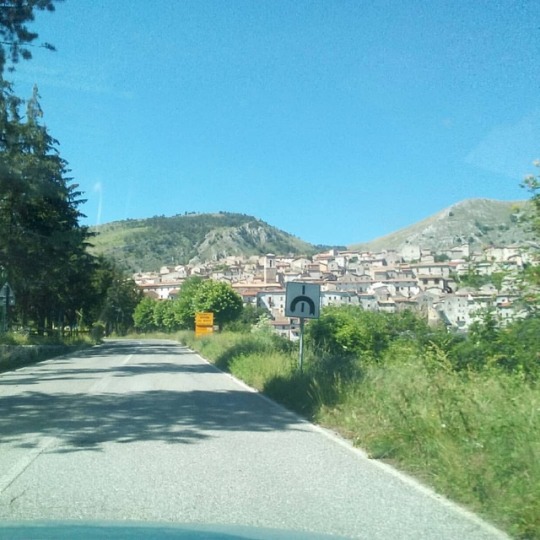
#welcome #benvenuti #Ortonadeimarsi #photosoftheday #landscape #paesaggio #paese #Avezzano #Abruzzo #Marsica (presso Ortona dei Marsi)
1 note
·
View note
Text
Canada Army Run commemorates anniversary of the Battle of Normandy
By Michael Timmermans, Communications Manager, Canada Army Run
Registration for this outstanding community event will be closing on September 16, and there are limited spots still available.
Ottawa, Ontario — On September 22, 2019, the 12th annual Canada Army Run will welcome over 20,000 participants as they run, walk and roll in this unique fitness, outreach and fundraising event held in the National Capital Region. 2019 will see the first edition of Army Run at its brand new location, the Canadian War Museum.
“Moving to the Canadian War Museum is a natural fit for Canada Army Run. The Museum is a destination people from all over the world come to see. It adds even more military flavour to Army Run and we couldn’t ask for a better partner,” said Major Dave Tischhauser, Canada Army Run’s Race Director.
In addition to the traditional 5K, 10K and half marathon race events held this year on brand new routes, Canada Army Run is commemorating the 75th anniversary of the Battle of Normandy and D-Day in 2019 with the Normandy Challenge, where participants will run or roll in both the 5K and 10K events, back-to-back, to honour the brave Canadians who fought in this historic Second World War battle.
This follows Army Run’s commemoration of the 100th anniversary of the Battle of Vimy Ridge in 2017 and the 75th anniversary of the Second World War Battle of Ortona in 2018. For 2020, Army Run plans on marking 75 years since the end of the Second World War in Europe with its 5K plus 10K Challenge in 2020.
Canadians took part in many victories during the Second World War, with the Battle of Normandy and D-Day among the best-known examples.
Victory at Normandy came at a high cost, with Canadians suffering the highest casualties within the British Army Group. On D-Day alone, 359 Canadian soldiers died, and more than 5,000 lost their lives during the two and a half months of fighting in Normandy. More than 13,000 more were wounded, many suffering injuries to their bodies and minds that they would carry for the remainder of their lives.
Canada’s impressive efforts in the Second World War remain a point of great national pride these many decades later. More than a million Canadians served during the Second World War.
Canada Army Run participants regularly share their experiences through the event’s website. France Hurley shared: “Army Run is a very special day to honor and pay tribute to our proud military family. Being the proud daughter, wife, mother and sister of members of the Canadian Armed Forces, we have a legacy of understanding the importance of our serving military and veterans.”
“Army Run gave us a chance to honor my grandfather who fought in the First World War at Vimy Ridge,” said Ms. Hurley. “My brother served in Kuwait, my husband served for 22 years and our son is a current serving member who has done two tours in Afghanistan and a tour in Kuwait,” she said.
Also returning for a fourth year is the signature Army Run distance event, the Commander’s Challenge, where participants take on the 5K and half marathon one after the other in pursuit of this ultimate test of pace and endurance.
“I am excited to be a part of Canada Army Run this year, my first after taking command of the Canadian Army earlier this summer,” said Lieutenant-General Wayne Eyre, Commander, Canadian Army.
“This is the Army’s largest outreach event and we welcome all participants and spectators to take part in the weekend’s activities. Come learn about the Canadian Army and the great causes Canada Army Run supports. The Canadian Army takes great pride in serving Canadians and this event is an opportunity for our soldiers to connect with Canadians and for Canadians to connect with our men and women in uniform.”
This year, all participants in the Normandy Challenge and Commander’s Challenge will receive unique clothing and race bibs, and, upon successfully completing the Challenges, will receive a special commemorative finisher medal from a Canadian soldier in addition to the traditional military dog tag themed medals for the individual distances.
“My first Canada Army Run came after seeing a promotion at the US Army Ten-Miler,” said Michael Yowell, event ambassador with Army Run’s Frontline Race Team from Omaha, Nebraska.
“I thought: ‘why not?’ and I've been hooked since,” said Mr. Yowell. “I love the Commander's Challenge and my best half marathon times have been set in Ottawa! Bar none, you'll never regret being part of Army Run!”
In addition to the running events, there is also a full roster of free activities for all ages lined up for the race weekend, including the Juno Challenge, a child-friendly obstacle course hosted by the Canadian Army mascot Juno the Bear.
The weekend is also a chance to meet the men and women of the Canadian Army, see firsthand the equipment they use and learn about the work they do across the country and around the world.
According to Chris Cassey, an athlete and Frontline Race Team member: “Canada Army Run has become a family tradition. We have serving family members (including my spouse) and, every year, he and I travel with his mom to participate. There’s really nothing like it! The experience is electric from expo to finish line.”
Canada Army Run is a chance for the troops to thank Canadians for their support, and for Canadians to thank the men and women who serve them at home and abroad.
Canada Army Run, presented by BMO Bank of Montreal, is no ordinary race and is one of the most inspiring events of its kind in the country. Civilians, Canadian Armed Forces personnel and participants of all ages and abilities take part together, showing their pride as Canadians and as supporters of fitness.
From the Howitzer cannon used as a starter gun to the dog-tag-inspired medals which soldiers award to the races’ finishers at the finish line, Canada Army Run is military-themed from start to finish.
For Hurley: “It's a day not to be missed for the wonderful atmosphere and comradery that has become a family tradition. Army Run is a chance to get together as a family to honour our loved ones and all those currently serving,” she said.
On September 22, 2019, Canada Army Run will welcome over 20,000 participants as they run, walk and roll in a unique fitness, outreach and fundraising event held in the National Capital Region. The event will be held at its new location, the Canadian War Museum, and will commemorate the 75th anniversary of the Battle of Normandy and D-Day.
0 notes
Video
youtube
Free Wine Fountain Opens in Italy (24 hours)
Grab your passport because a town in Italy is welcoming visitors with a drinking fountain that dispenses wine.
Travellers in the town of Abruzzo in central Italy will be able to quench their thirst at the new fountain for free. The fountain offers red wine and is open to members of the public 24 hours a day, seven days a week.
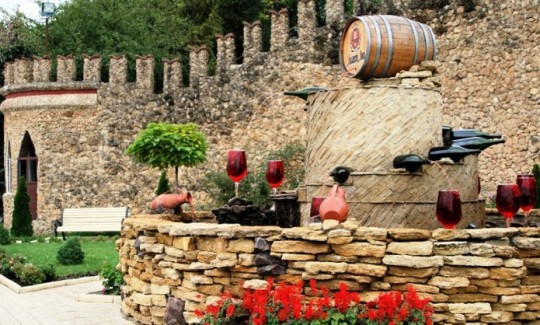
Stop what you’re doing and start planning your next vacation—and don’t forget to pack a wine glass.

A vineyard in the Abruzzo region of Central Italy has installed the tourist destination of your dreams, a wine fountain, Mashable reports. This magical destination is exactly what it sounds like, a fountain that flows 24-hours a day with red wine. And the best part is that the wine is completely free.
This so-called fontana di vino is located in the Dora Sarchese vineyard in the small town of Caldari di Ortona, which sits on the Italian pilgrimage route of Cammino di San Tommaso. According to The Local, the fountain is a joint project of the vineyard and a non-profit group that works to protect the pilgrimage route. It was inspired by a similar wine fountain that opened on Spain’s pilgrimage route, the Camino de Santiago de Compostela, a few years ago.
The Italian fountain is open to all travelers who find themselves thirsty for a glass of the locally grown, locally made wine, so long as you’re not a “drunkard” or “lout,” of course. According to the vineyard’s Facebook page those people are not invited and will have to make due with boring old water fountains instead.
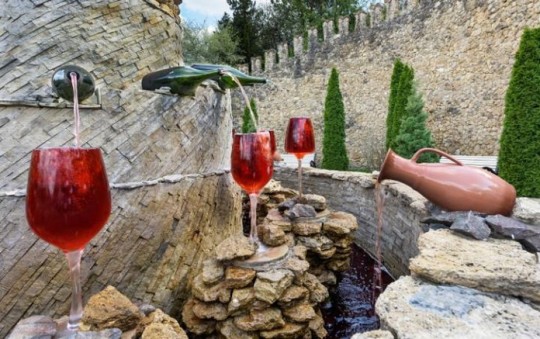
https://www.this-is-italy.com/wine-fountain-abruzzo-town/
0 notes
Photo

WHAT LIT THE EARTH Friday April 6 at 8pm 8mm and 16mm Works from Artifact Small Format Film Festival Introduced by Raeesa Farooqi (CSIF) FREE (donations welcome)
Cineworks, Iris Film Collective and Calgary Society of Independent Filmmakers presents 10 new motion picture works shot and presented on Super 8 and 16mm film! Film are selected from the Artifact Small Format Film Festival 2018 and introduced by CSIF Programming and Communications Director, Raeesa Farooqi. Artifact Small Format Film Festival (formerly 100 Dollar Film Festival) is one of only a few festivals worldwide dedicated to works finished on Super 8 and 16mm film. When the $100 Film Festival was born in 1992, it showcased eight short films on Super 8. The name sprung from the challenge to shoot a short film on four rolls of Super 8 – which tallied to the cost of $100. In following years, the festival dropped the budgetary limit and allowed 16mm film, which shifted the focus from low budget to quality small-format films. Thus, the name was changed to the Artifact Small Format Film Festival in 2017 so as to better represent the festival's role as an international celebration of creative storytelling on celluloid. Program* I Am Sitting In A White Room – Lucie Adams 2017, Calgary, 16mm, 5:07 This experimental film uses multiple in-camera techniques and hand processing to a poem written by Adams. Shot during CSIF’s 48 Hour Film Frenzy in 2017. Other team members: Duncan McMillan, Kevin Dong, and Yvonne Abusow. What Lit The Earth – Meganelizabeth Diamond 2017, Winnipeg, Super 8, 3:30 Once upon a time there was love in the light, now there’s only love in the dark. A super 8 film about the 2017 eclipse. Kingsway – Jeffery Chong 2017, Vancouver, 16mm, 6:28 Kingsway was once the only highway into Vancouver, but now its monumental scale contrasts with the human scale of family neighbourhoods and storefronts. Architectural signs overpower the foreground, but present-day buildings and spaces reflect a changing vernacular as portrayed by road's soundscape and new sense of place. Dingbats – Scott Fitzpatrick 2015, Winnipeg, 16mm, 7:08 Can an experimental animator follow contemporary Hollywood logic? New ideas are out of fashion; everything's a trilogy. Laser-printed onto recycled 16mm film in 2015, Dingbat's Revenge is a coded, stroboscopic manifesto pitched somewhere between abstraction and representation. "Can you feel that? We're done here. Move out of the way or I'm gonna run you over." - Tony Stark. Please note: Dingbats contains strobe lighting effects that may not be suitable for individuals who suffer from epilepsy and other visual light simulation effects. No Fun House – Beau House 2017, Vancouver, 16mm, 2:30 A sound visualization experiment on 16mm film. Made with a Bell & Howell contact printer. For Rest – Shinya Isobe 2017, Japan, 16mm, 16:30 A feast is laid out on a table nestled among the roots of a tree in a forest. In a 16mm time-lapse the food gradually rots. Watching this time pass, our imagination conjures images of various things, including death, and spins its own tales until eventually, as the table becomes a mound of grass and new shoots begin to grow, while being struck and shaken by the mystical nature of time we come to embrace the rebirth of hope. Strings Attached – David LaRiviere 2017, Saskatoon, Super 8, 5:09 A one-take-Super 8 project about a puppeteer who is hunted by his puppet. Room 11a – Lindsay McIntyre 2017, Edmonton, 16mm, 1:00 The studio workings behind door 11a in the Ortona Armoury. An ode to a practice and place that should not be forgotten. Nothing to Write Home About – Luz Olivia 2016, USA, 16mm, 3:05 Is it possible to assess the legitimacy of trauma based on emotion & memory, rather than relying on the evaluation of physical science? Nothing to Write Home About explores this notion through the use of personal narrative & stop motion animation on hand processed 16mm film. White Trash – Jeff Zorrilla & Ignacio Tamarit 2017, Argentina, Super 8, 2:30 Cinematic Graffiti. A defacing of the image of normality sold to the public en masse. We manipulate these images to express our visceral reaction as filmmakers and artists to the inauguration of Donald Trump as President of the United States, the disastrous yet logical conclusion of a system that is finally imploding before our eyes. *Screening order to be announced on the night Please note: Lindsay McIntyre will be running a Monoflex B&W experimental film processing workshop at Cineworks Annex on Sunday April 8.
0 notes
Text
Mañana es la Presentación oficial de julian Arredondo
Mañana es la Presentación oficial de julian Arredondo
Tutto confermato: Sabato 7 gennaio, ore 15.30 vi aspettiamo al Teatro Tosti di Ortona per un grande inizio di 2017 a tinte #OrangeBlue. Everything is ready for the 7th of January Official Presentation. Official meeting at 3.30 p.m. in Teatro Tosti Ortona, to welcome together a great new 2017 #OrangeBlue season! Todo confirmado: SÁBADO 7 de enero, 15.30 horas os esperamos en el teatro duros de…
View On WordPress
0 notes